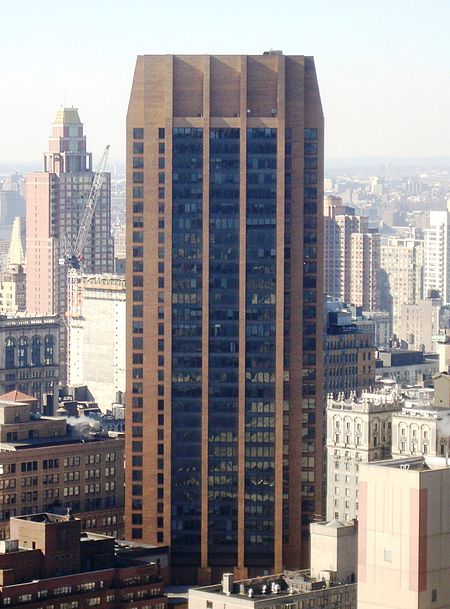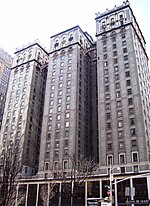3 Park Avenue
1979 establishments in New York City34th Street (Manhattan)Murray Hill, ManhattanOffice buildings completed in 1975Park Avenue ... and 3 more
Privately owned public spacesSkyscraper office buildings in ManhattanUse mdy dates from August 2019

3 Park Avenue is a mixed-use office building and high school located on Park Avenue in Manhattan, New York City that was built in 1973. The building, surrounded on three sides by a plaza, is categorized as a Midtown South address in the Kips Bay, Manhattan, Murray Hill, and Rose Hill neighborhoods. It is located between East 33rd and 34th Streets, close to the 33rd Street subway station (4, 6, and <6> trains), an entrance to which is built into the building.
Excerpt from the Wikipedia article 3 Park Avenue (License: CC BY-SA 3.0, Authors, Images).3 Park Avenue
Park Avenue, New York Manhattan
Geographical coordinates (GPS) Address External links Nearby Places Show on map
Geographical coordinates (GPS)
| Latitude | Longitude |
|---|---|
| N 40.746388888889 ° | E -73.981111111111 ° |
Address
3 Park Avenue
Park Avenue 3
10016 New York, Manhattan
New York, United States
Open on Google Maps







